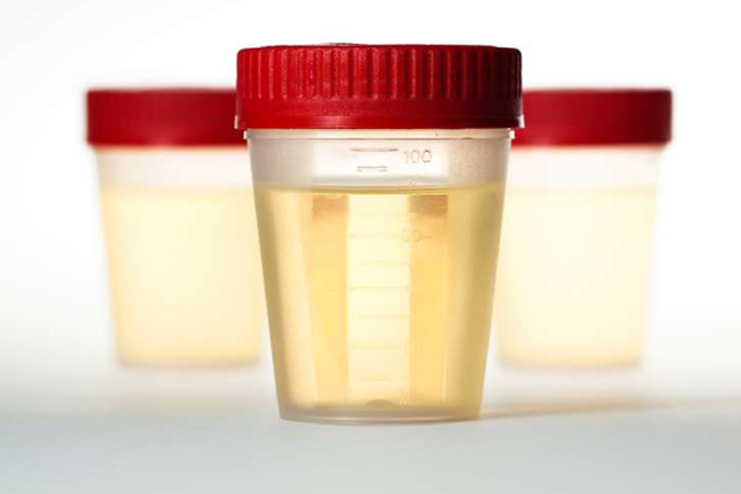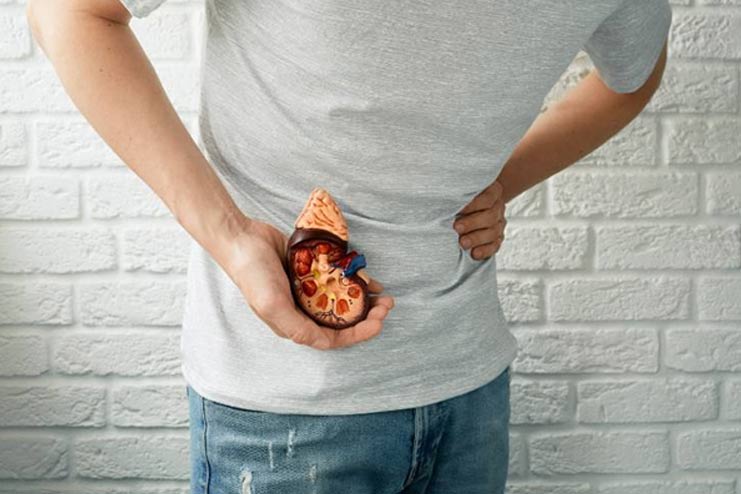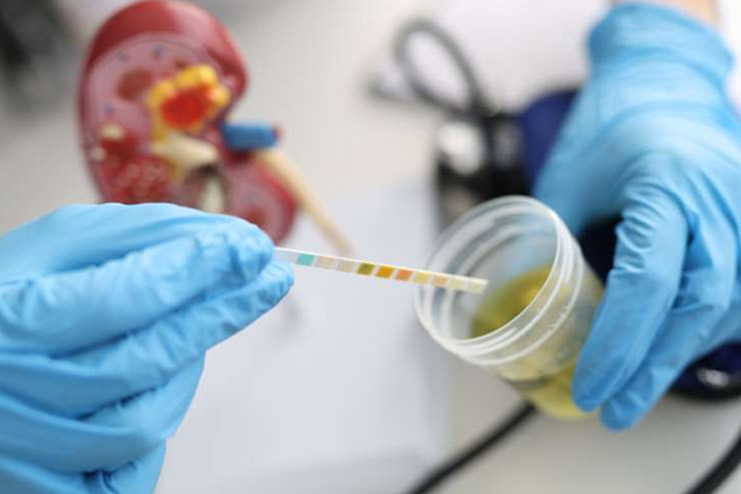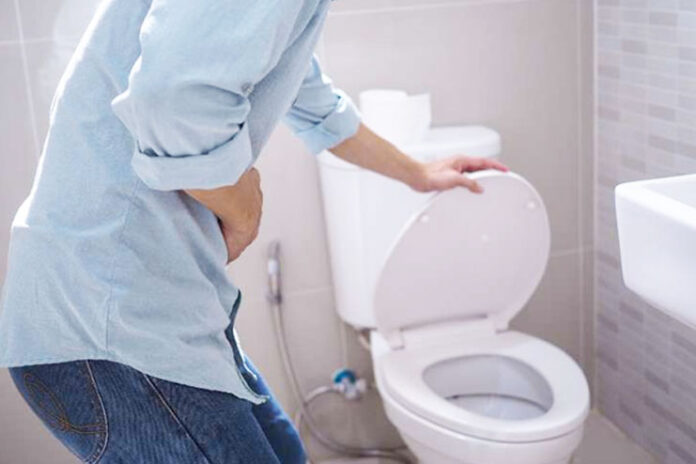Affiliate Disclaimer
Some links in this article are affiliate links. We may earn a small commission if you make a purchase through these links, at no extra cost to you. We only recommend products we find useful to our readersCloudy urine might indicate several health issues ranging from minor food allergies to central infections or long-term illnesses. Identifying and comprehending this symptom is essential to initiating early detection and treatment, which may avert problems and improve health outcomes. Important subjects covered in this article include common causes of cloudy urine, methods for diagnosis, available treatments, and preventative and management techniques. By delving into these topics, readers will thoroughly comprehend the significance of cloudy urine, facilitating proactive self-care and well-informed health decisions.
What Does Cloudy Urine Mean?

The term “cloudy urine” refers to urine that has a milky or murky appearance rather than the pale yellow and transparent appearance that is usually associated with healthy pee. This cloudiness may result from several different substances, including pus, blood, mucus, crystals, or bacteria, all of which alter the look of the urine. Cloudy urine may result from non-threatening reasons such as dehydration or diet. Still, it may also be an indication of more severe health problems, like urinary tract infections (UTIs), kidney stones, or sexually transmitted infections (STIs).
Keeping track of changes in urine is critically essential for sustaining overall health. Since urine is a byproduct of the filtration system in the body, the appearance of urine can provide important signals regarding the activities of the kidneys and the metabolism. To identify and address any health issues at an earlier stage, persistent cloudiness or changes in urine can indicate that a medical evaluation is required. Regularly monitoring urine alterations helps detect anomalies early, ensuring timely intervention and reducing the risk of complications from untreated conditions.

Common Causes of Cloudy Urine
-
Dehydration

- How dehydration affects urine clarity: Dehydration occurs when our body loses more fluids than it takes in, resulting in more concentrated urine. Due to the presence of surplus minerals and waste items that the kidneys are attempting to eliminate with less water, this concentrated urine frequently appears darker and can be murky.
- Signs of dehydration: Dry mouth, increased thirst, infrequent urination, urine that is dark yellow or amber in color, weariness, and dizziness are all common symptoms observed in dehydrated people. Severe dehydration can result in a quick heartbeat and confusion, both of which call for immediate medical attention. By ensuring you are hydrated throughout the day by drinking enough water, you can improve overall health and produce clear urine.
2. Urinary Tract Infections (UTIs)

- How UTIs cause cloudy urine: The invasion and growth of bacteria, most frequently E. coli, in the urinary system is what causes UTIs. As a result of the infection, inflammation and the presence of pus or white blood cells in the urine causes the urine to have a murky appearance. Urinary tract infections (UTIs) can affect any component of the urinary system, including the kidneys, the urethra, and the bladder.
- Symptoms and risk factors for UTIs: Urinary tract infections (UTIs) can be associated with symptoms such as an urgent and frequent desire to urinate, a burning feeling during urination, urine that is hazy or smells strongly, pelvic pain, and fever. Sexual activity, menopause, specific methods of birth control, and a history of UTIs are all risk factors. Maintaining proper personal hygiene and drinking lots of water can help prevent urinary tract infections (UTIs).
3. Sexually Transmitted Infections (STIs)

- The link between STIs and cloudy urine: Sexually transmitted infections (STIs), including gonorrhea and chlamydia, can cause urine to become murky due to the presence of bacteria, white blood cells, and discharge. These infections frequently induce inflammation in the reproductive organs and urinary system, altering the appearance of urine.
- Common STIs that cause cloudy urine include gonorrhea, chlamydia, and trichomoniasis. Patients experience symptoms such as pelvic pain, genital itching, pain while urinating, and unusual discharge from the genital region. It is essential to engage in safe sexual practices, undergo routine tests for sexually transmitted infections (STIs), and treat diseases as soon as possible to avoid consequences.
4. Kidney Stones

- Formation and impact of kidney stones on urine appearance: Hard mineral and salt deposits that form in the kidneys are referred to as kidney stones. The presence of blood, crystals, and infection connected with the rocks can cause urine to appear hazy. As stones travel through the urinary tract, they can cause substantial pain and alterations in the urinary system.
- Symptoms associated with kidney stones: Kidney stones can cause a variety of symptoms, including severe pain in the back or side, pain during urination, frequent urination, urine that is cloudy or smells foul, nausea, and vomiting. Smaller stones may be able to pass independently, whereas larger rocks may require medical intervention such as lithotripsy or surgery. You can prevent the development of kidney stones by drinking enough water and avoiding meals high in oxalate.
5. Diet and Supplements

- Foods and supplements that can cause cloudy urine: Certain meals and supplements can cause urine to become cloudy. Supplements that include high quantities of vitamin D, calcium, and phosphorus can cause crystalluria, characterized by formation of crystals in the urine. Eating foods which are high in purines, such as red meat and shellfish, can also cause uric acid crystals to form, resulting in murky urine.
- Importance of a balanced diet: To prevent cloudy urine and maintain general health, a well-balanced diet is essential. A diet abundant in fruits, vegetables, and adequate water can promote renal function and prevent the accumulation of compounds that can cause urine to become cloudy. Consuming supplements and making dietary decisions in moderation can assist in precise urine maintenance.
6. Other Medical Conditions

- Diabetes and its effects on urine: Since diabetes raises the blood sugar levels, which can lead to elevated glucose levels (glycosuria), it is possible that diabetes will change the appearance of urine. Because of this, the urine may have a hazy or foamy appearance. Other factors that can lead to cloudy urine include diabetic nephropathy, which is a consequence of diabetes that affects the kidneys.
- Liver disease and other potential causes: Bilirubin can leak into the urine as a result of liver illness, such as hepatitis or cirrhosis, which can induce cloudiness in the urine. Some metabolic illnesses, autoimmune diseases, and prostate problems in men are also potential causes of hazy urine.
Cloudy Urine in Specific Populations
-
Cloudy Urine During Pregnancy

Cloudy urine is one of the many changes in the body that can occur during pregnancy due to hormonal and physical changes. UTIs, which are more common in pregnant women due to changes in the urinary system, are among the common causes. Urine may seem hazy due to increased protein excretion or proteinuria, which may indicate preeclampsia, a potentially dangerous illness. Dehydration, dietary changes, or vitamin consumption imbalances can also cause urine cloudiness.
Women who are expecting should keep an eye on their urine and notice any consistent changes. You must seek medical attention if symptoms like pain, burning when urinating, frequent urination, edema, elevated blood pressure, or excruciating headaches are present. Prompt action can avert difficulties and guarantee the well-being and security of the mother and child.
-
Cloudy Urine in Children

Several factors, including dehydration—frequently brought on by children’s higher activity levels and lessened awareness of the need to stay hydrated—can produce cloudy urine in children. Another common reason is UTIs, especially in young girls. Diet also matters because foods and drinks that kids eat or drink can affect how their urine looks. Sometimes, more severe diseases such as kidney infections or metabolic abnormalities might be indicated by murky urine.
A pediatrician should be consulted to identify the source of a child’s chronically murky urine. Early diagnosis of the treatment is essential to avoid difficulties and guarantee appropriate growth and development. A healthcare professional can carry out required tests and offer advice on nutrition, hydration, and other preventive measures to preserve the child’s urinary health and general well-being.
Symptoms Accompanying Cloudy Urine

Symptoms accompanying cloudy urine can provide insight into its underlying cause. Common symptoms include burning when urinating, which is usually associated with sexually transmitted infections (STIs) or urinary tract infections (UTIs), and a robust and foul-smelling stench, which frequently suggests an infection. Back or lower abdominal pain may indicate kidney stones or kidney infection. Additional symptoms that indicate more severe infections or systemic disorders affecting the urinary tract include fever, chills, nausea, and frequent or urgent urinating.
Symptom recognition is essential for a precise diagnosis and prompt therapy. These signs aid medical practitioners in determining the degree and underlying cause of murky urine. With early detection and intervention, better health outcomes can be promoted and complications can be avoided.
Diagnosis of Cloudy Urine Causes

A thorough approach is required to diagnose cloudy urine, beginning with a detailed medical history and physical examination. Medical professionals will ask about any accompanying symptoms, eating patterns, medication use, and degree of hydration. A urinalysis, which looks for blood, protein, glucose, crystals, and evidence of illness in the urine, is frequently the initial diagnostic test.
Additional testing, such as cultures to look for bacterial infections, blood tests to check the function of the kidneys and the level of glucose in the blood, and imaging procedures like ultrasound or CT scans to find structural problems or urinary tract stones, can also be performed. Cystoscopy, a method that uses a scope to inspect the bladder and urethra, may be required in certain situations. The underlying problem causing hazy urine can be appropriately treated and managed with the help of an accurate diagnosis obtained utilizing these approaches.
Treatment Options for Cloudy Urine
-
Home Remedies

Drinking more water is one of the most accessible and efficient home treatments for cloudy urine. Hydration dilutes urine and flushes bacteria and irritants that cause cloudiness. Diet which is very rich in fruit and vegetables and low in high-purine foods like red meat and shellfish can prevent urine crystals. Avoiding excessive vitamin and mineral supplements helps clean urine. Cranberry juice may prevent the urinary tract infections (UTIs), which cause murky urine.
OTC hazy urine treatments can also help. UTI and kidney stone pain can be relieved with acetaminophen or ibuprofen. Urine alkalizers like sodium bicarbonate reduce urine acidity and relieve symptoms. OTC cranberry pills may help the urinary tract. If symptoms persist, take these remedies cautiously and do not substitute them for medical guidance.
-
Medical Treatments

Medical professionals prescribe medications for cloudy urine due to bacterial infections like UTIs. The bacteria and infection severity determine the antibiotic and therapy length. Finish the course of antibiotics to eliminate the disease and prevent resistance.
Cloudy urine due to renal or diabetes disease requires treatment. Diabetics manage blood glucose via food, exercise, and insulin. Treatment for kidney stones includes pain management, hydration intake, and lithotripsy to break down more giant rocks. Monitoring and customized treatment regimens assist in controlling chronic disorders and preventing hazy urine.
Prevention Tips
Hydration is one of the best strategies to avoid cloudy urine. Daily water consumption dilutes urine, eliminating toxins and lowering the incidence of infections and kidney stones. Water intake should be at least eight glasses daily, depending on activity, environment, and health. Hydration optimizes urinary function and clears pee.
Preventing urinary tract infections (UTIs) and other cloudy urine concerns requires good hygiene. To prevent the bacteria from spreading from the anal to the urethra, wipe from front to back after using the toilet. Urinate to remove microorganisms from the urinary tract after sexual activity. Wearing breathable cotton underwear and avoiding tight garments can also reduce genital dampness and bacteria.
Early detection and treatment of cloudy urine disorders require regular medical checkups. Urine tests during checkups can detect infections, renal disorders, and diabetes before they worsen. Regular doctor visits ensure urine appearance changes are addressed and treated quickly. Proactive health care benefits urinary health and overall well-being.
When to See a Doctor

Seek medical attention right away if you have persistently murky urine for longer than a few days, especially if you also have other symptoms, including a strong, foul odor, blood in the urine, severe back or stomach discomfort, fever, chills, or a burning feeling when urinating.
These signs may indicate more severe illnesses like kidney stones, urinary tract infections (UTIs), or other systemic issues that necessitate professional diagnosis and treatment.
Preparing for your doctor’s visit will ensure a thorough examination and accurate diagnosis. Keep a detailed journal of the symptoms, noting when they first appeared, how often they occur, and any connected factors like dietary adjustments, fluid replacements, or medication. Keep track of further symptoms, such as fever, soreness, or strange discharge.
Include all prescribed drugs, recent dietary modifications, and supplements. Having this information at hand makes it easier for your healthcare professional to diagnose and treat you and better understand your condition. Urinary and general health maintenance requires routine examinations and prompt medical consultations.
Conclusion
In conclusion, cloudy urine can indicate benign to significant health issues. Understanding its causes and effects is crucial. We examined how dehydration, UTIs, STIs, kidney stones, nutrition, and medical disorders cause cloudy urine. Recognize discomfort, fever, and urine abnormalities for early detection and treatment. Preventive strategies include sufficient hydration, hygiene, and medical checkups. When cloudy urine persists, there is blood in the urine, or it causes severe pain, medical attention is required. Healthcare professionals can adjust diagnoses and therapies to target the root causes. Remember that early urinary health monitoring and medical intervention can improve overall health. Stay informed, hydrate, and prioritize your health by seeing a doctor as needed.
-
Apr 2018Written by Kalyani
-
Aug 2024Edited by Ankita
In this Article


















